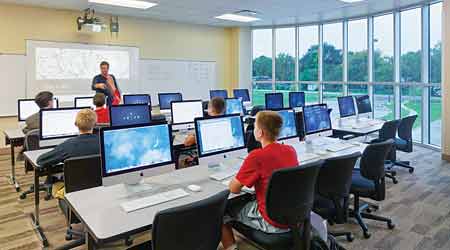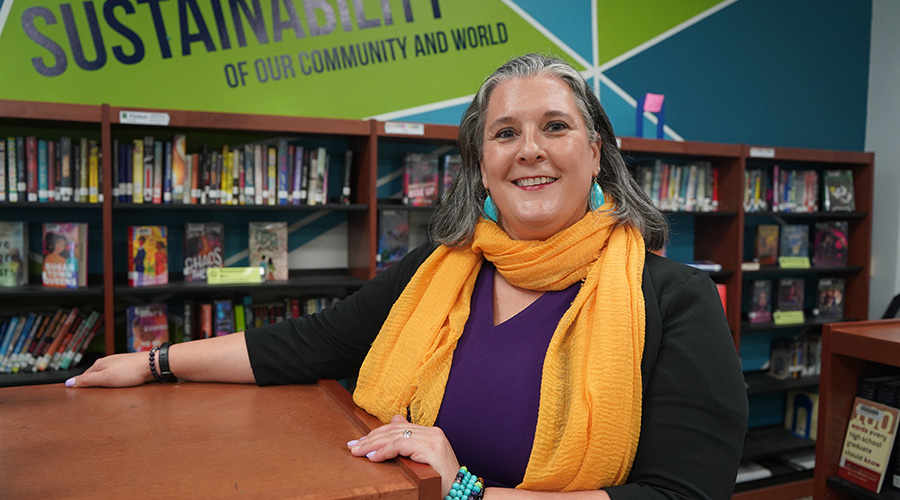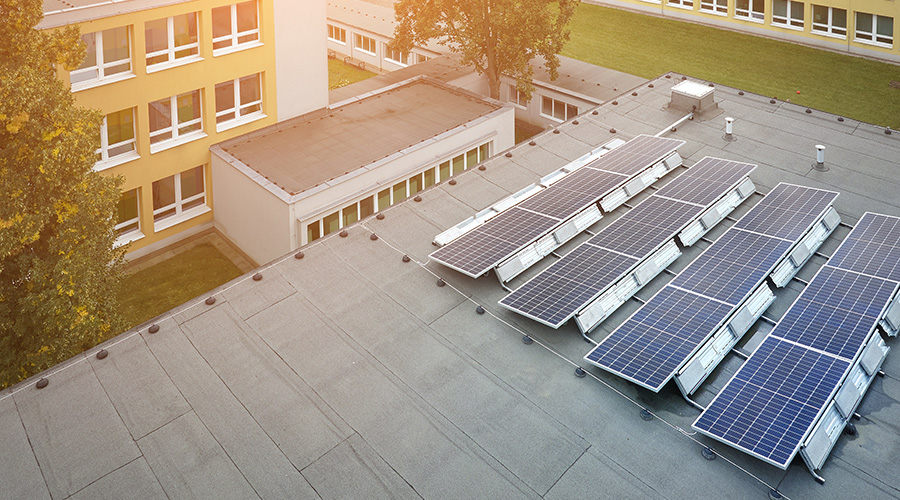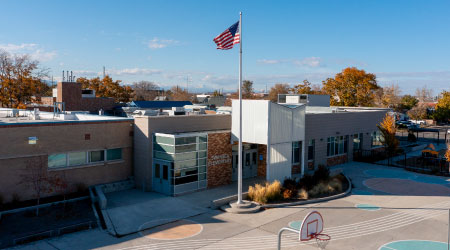 At Gretna High School in Gretna, Neb., 65 percent of teachers use
classroom projectors every class period or daily. Positioning large windows away from projection surfaces minimizes the projection wash out effect.Alistair Tutton Photography
At Gretna High School in Gretna, Neb., 65 percent of teachers use
classroom projectors every class period or daily. Positioning large windows away from projection surfaces minimizes the projection wash out effect.Alistair Tutton PhotographyFor K-12 Schools, Sustainability Is About Cost Savings, Efficiency
Daylighting is among the most impactful strategies for savings — but also better student performance, well-being, and health.
When school districts consider what, if any, sustainable elements they can afford to implement on their campuses, they evaluate options, costs, and return on investment and face questions about the affordability of incorporating sustainable solutions. Every school district operates on a restricted budget. Whether funding permits a few simple, no-cost steps or allows for aggressive design solutions with significant first costs, implementing some degree of sustainability in any district is within reach.
There are a range of possibilities districts might consider during a project’s planning and design phases to help maximize efficiency and save on cost, as well as steps districts can take after the building is fully operational to become more energy efficient, and ultimately save taxpayers money.
Start with the building itself
The very form, size, and orientation of a building greatly influences energy consumption, which directly affects operating and maintenance budgets. During the planning and design of a new facility, design teams should examine a variety of building orientations, considering how each would affect energy consumption and providing comprehensive data on all options, costs, and payback timelines.
For school districts that choose to renovate rather than build new, re-orienting an entire building is not possible. They can, however, reimagine the structure by careful selection of efficient materials and systems. Such was the case of the renovated Zellwood Elementary School, a 50-year-old building serving a small neighborhood community in Orlando, Fla.
The design team tested various performance criteria for the building walls, glazing, and roof selection, allowing the owner to choose the right combination for the school district and the community. The district chose to increase the amount of roof insulation to slightly above code, an option with an estimated payback of five to eight years. One of the most significant modifications to the building envelope was the application of glazing with a solar heat gain coefficient of 0.25 in thermally broken frames, an option with payback of less than two years. Additional energy savings were achieved by new continuous insulation around the building envelope and solar water heating and ice storage to alleviate demand on the power grid during non-peak hours.
Let in the light
Daylighting is a complicated topic. Studies confirm that students and staff prefer classrooms with daylighting. The sun, while a powerful light source that is attractive to students and educators, comes with challenges that demand proper planning. For instance, direct glare in a classroom is a concern, since too much daylight can wash out large monitors or computer screens.
For the new Gretna High School in Gretna, Neb. (see photo above), a unique lighting design solution incorporated different sizes of windows, two glazing materials, shading to minimize glare, and supplemental electric lighting. Large windows are positioned away from a dedicated teaching wall and projection surface to minimize the projection wash out effect, while blinds and shading on these large windows control glare on projection screens. Short horizontal windows near the ceiling evenly distribute daylight into the classrooms, supplemented by electric lighting when necessary. Some classrooms also feature diffused translucent glass, which doesn’t offer views to the outside but does control direct glare. These classrooms only need to use blinds for activities requiring a fully darkened room.
During the school’s first year of operation, post occupancy measurements and teacher surveys produced the following results:
• 96 percent of educators preferred a classroom with windows.
• 25 percent of educators lowered the electric lighting when light is adequately provided through the windows.
• 70 percent of educators liked the size and location of the windows.
• 65 percent of educators used projectors every class period or daily.
• 90 percent of educators lowered the electric lighting when using the projector.
Conversations with Gretna High School teachers found that they used the switch zones designed to reduce the electric light level. The designed electric lighting is 30 percent better than code, and several teachers are reducing the electric lighting by an additional third because of the available daylight.
Related Topics:














